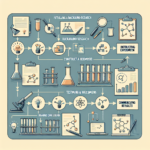Discover the latest advancements in space technologies, from satellites to probes, and their pivotal role in reshaping space exploration missions and innovations.

Space technologies have become fundamental to the advancement of modern society, playing a crucial role in various aspects of daily life. The exploration and utilization of space through technologies such as satellites and space probes have revolutionized communication, navigation, and weather monitoring. These technologies not only foster critical scientific research but also enhance the efficiency and effectiveness of services relied upon by billions globally.
Satellites, for instance, exemplify one of the most prevalent applications of space technology. They are employed for diverse purposes, including telecommunications, broadcasting, and internet connectivity. As the world becomes increasingly interconnected, satellite systems facilitate real-time information exchange, underscoring their importance in international relations and global commerce.
Another significant application of space technology is in weather monitoring. Satellites equipped with advanced sensors provide vital data on atmospheric conditions, allowing meteorologists to predict weather patterns with improved accuracy. These forecasts, in turn, inform critical decisions in agriculture, transportation, and disaster management, ultimately contributing to public safety and economic stability.
Navigational technologies, primarily driven by satellite systems such as GPS, have transformed how individuals and organizations traverse the globe. Whether for personal navigation or for logistics and transportation industries, these technologies have made navigation more accessible and reliable, thus streamlining operations across various sectors.
The exploration of outer space through various probes is another fascinating facet of space technologies. Probes deployed to distant celestial bodies provide invaluable insights into the solar system and beyond. This scientific exploration reveals the complexities of our universe and drives innovation in technology and engineering.
As we continue to develop and refine these technologies, their significance in addressing global challenges becomes increasingly evident. A comprehensive understanding of their applications will pave the way for discussions on innovations, advancements, and future prospects in the realm of space exploration.
Satellites are artificial objects that are intentionally placed into orbit around the Earth or other celestial bodies. They serve a variety of critical functions, playing an integral role in areas such as telecommunications, Earth monitoring, and space exploration. Satellites can be categorized into different types based on their orbits and functions, including geostationary satellites, polar satellites, and low Earth orbit satellites. Each type has its unique applications and operational characteristics.
Geostationary satellites orbit the Earth in sync with its rotation, allowing them to remain over the same geographic area. This is particularly valuable for telecommunications, as it enables consistent communication signals to be transmitted, essential for television broadcasts, weather monitoring, and internet services. In contrast, polar satellites traverse the poles in low Earth orbit, providing comprehensive coverage of the planet as the Earth rotates beneath them. These satellites are predominantly used for Earth observation, climate monitoring, and environmental research, delivering critical data that informs scientific and policy decisions.
Satellites also play a pivotal role in space exploration, helping scientists gather information about distant planets and celestial phenomena. Space agencies deploy various satellite technologies to remotely study the Moon, Mars, and beyond, often providing insights that drive future missions and innovations.
Individuals and businesses can leverage satellite technology in numerous ways. For instance, businesses can utilize satellite imagery to enhance agricultural efficiency, monitor supply chains, or improve logistics and navigation. On a personal level, satellite-based services can provide navigation assistance and facilitate communication in remote areas where traditional networks may be unreliable. By understanding how satellites operate and their diverse applications, individuals and organizations can harness the power of these technologies to meet their specific needs. This knowledge empowers users to make informed decisions on using satellite solutions effectively.

Space probes are unmanned spacecraft designed to travel beyond Earth’s orbit, gathering data about various celestial bodies and phenomena. They play a pivotal role in space exploration by enabling scientists to conduct research and make discoveries without the limitations of human presence. Probes are equipped with sophisticated instruments that can assess the physical and chemical properties of planets, moons, asteroids, and comets, revealing crucial information about our solar system and beyond.
The primary purpose of space probes is to collect data that enhances our understanding of the universe. Unlike satellites, which often remain in orbit around Earth, space probes venture far into space, where they can study distant objects in their natural environments. This capability has led to extraordinary missions, such as the Voyager probes—which, launched in 1977, have traveled beyond the heliosphere and continue to send back valuable information about interstellar space. Their discoveries regarding the composition of the outer planets and the structure of the solar wind have significantly impacted our knowledge of planetary science.
Another notable mission is the Mars rover program, which includes several probes like Curiosity and Perseverance. These probes have not only conducted surface explorations but have also searched for signs of past life, assessed Martian geology, and analyzed climate patterns. Additionally, missions like the New Horizons probe, which flew past Pluto in 2015, have provided unprecedented data about this distant dwarf planet, revealing complex geological features and atmospheres.
Overall, space probes have transformed our capabilities in space exploration. Through their innovative technology and design, they have expanded human understanding of the cosmos, delivering invaluable information that continues to inform both scientific study and public interest in space. The exploration of distant worlds via these sophisticated unmanned vehicles represents a crucial chapter in humanity’s quest to comprehend the universe.
The landscape of space technology is rapidly evolving, characterized by significant innovations that promise to redefine our approach to exploring the cosmos. One of the most noteworthy advancements is the miniaturization of satellites. Traditionally, satellites were large, costly, and complex, requiring substantial resources for development and launch. However, recent advancements in microelectronics and materials science have enabled the creation of smaller, lighter satellites known as CubeSats. These compact devices are not only more economical to produce but also easier to launch, allowing a broader range of entities, including universities and startups, to participate in space exploration. This democratization is vital, as it fosters a diverse ecosystem of innovation.
Another transformative development in space technology is the emergence of reusable rockets. Historically, rocket launches involved expensive, single-use vehicles that contributed to prohibitive costs associated with access to space. In contrast, companies like SpaceX have pioneered the concept of reusability, successfully landing and refurbishing rockets for multiple missions. This innovation significantly reduces launch costs, making space more accessible for both commercial endeavors and scientific research. As more organizations adopt reusable technologies, the trajectory of space exploration will likely shift toward a more sustainable model.
Additionally, advancements in propulsion systems are reshaping the potential for interstellar missions. Innovative approaches, such as ion propulsion and solar sails, offer efficient alternatives to conventional chemical propulsion. These systems provide the capability for longer missions, enabling spacecraft to travel further and gather unprecedented data about distant celestial bodies. As propulsion technology continues to evolve, it will expand the horizons of what is achievable in space exploration.
As these innovations converge, they are paving the way for a future where space is accessible to a wider array of stakeholders, fostering collaboration between private companies, academic institutions, and governmental agencies. The innovations in space technology are not merely technical feats; they signify a transformative era that encourages exploration and scientific discovery beyond our planet.
The future of space technologies holds vast potential for advancements that could redefine humanity’s relationship with the cosmos. One of the most exciting prospects is asteroid mining, which may soon become a viable method for obtaining valuable resources such as rare metals and water. As technology progresses, the prospect of launching missions to mine asteroids becomes more feasible. Companies are already exploring the economic implications of utilizing these space resources to support both terrestrial and extraterrestrial endeavors. With water and rare minerals sourced from asteroids, we may reduce dependency on Earth’s resources while fueling future space missions.
In addition to asteroid mining, the colonization of other planets, particularly Mars, has gained considerable momentum. Research and development in habitat construction, life support systems, and sustainable living conditions are currently underway. The establishment of a human presence on Mars could serve as a launchpad for further exploration of the solar system. Space agencies, alongside private enterprises, are heavily investing in the technologies essential for long-duration space travel. Such endeavors aim to address not just the logistics of sending humans to Mars but also ensuring they can thrive in extraterrestrial environments.
Artificial Intelligence (AI) will also play a crucial role in the evolution of space exploration. AI-driven systems can analyze vast amounts of data from missions, optimize flight paths, and even perform autonomous repairs on spacecraft. Machine learning algorithms will enhance decision-making processes, making space missions safer and more efficient. Furthermore, as we venture deeper into space, AI may assist in the management of habitats on other planets, enabling them to adapt dynamically to changing environmental conditions.
As we ponder these advancements in technology, it becomes essential to consider the implications for humanity. The pursuit of asteroid mining, planet colonization, and the integration of AI in space exploration compels us to reflect on our place in the universe and the responsibilities that come with it. The future of space technologies is not only about exploration but also about the ethical considerations of interacting with the wider cosmos.

The realm of space technology holds immense potential for scientific advancement and exploration. However, it is not devoid of challenges and risks that must be carefully considered. One significant concern is space debris, which refers to defunct satellites, spent rocket stages, and fragments from past collisions. As the number of satellites in orbit increases, so does the likelihood of accidents caused by this debris. The risk of collisions not only endangers active spacecraft but also threatens the safety of astronauts aboard international space stations. Consequently, the management of space debris has become paramount in ensuring the sustainability of space operations.
Another critical issue pertains to cybersecurity vulnerabilities. As space exploration becomes increasingly reliant on advanced technologies, the interconnectedness of systems raises questions about cybersecurity risks. Space missions depend on sophisticated software and communication networks, which can be susceptible to hacking or technical failures. A successful cyber attack against control systems could disrupt satellite operations, lead to data loss, or even compromise sensitive information, underscoring the need for robust cybersecurity measures in the realm of space technology.
The high costs associated with space missions present yet another hurdle. Developing, launching, and maintaining space technologies requires significant financial investment. This disparity often limits participation to well-funded agencies and private companies, which could lead to monopolistic practices rather than collaborative efforts that benefit all humanity. Furthermore, as commercialization of space increases, ethical considerations gain prominence. The responsible stewardship of space resources must be prioritized, factoring in potential issues of environmental impact, equitable access, and long-term sustainability.
Addressing these challenges is crucial for the future of space technology and its contributions to our understanding of the universe. A balanced approach that prioritizes safety, security, and ethical considerations can pave the way for continued advancements.
Engaging with space technology is an exciting endeavor that requires a blend of education, passion, and creativity. For those looking to enter this dynamic field, a solid educational foundation is paramount. Aspiring space technologists should consider pursuing degrees in fields such as aerospace engineering, astrophysics, or computer science. Many universities worldwide now offer specialized programs focusing on space exploration and satellite technology. These programs not only provide theoretical knowledge but also practical skills through hands-on projects and internships.
In addition to formal education, participating in workshops, seminars, and online courses can further enhance one’s understanding of space technologies. Organizations like NASA and the European Space Agency frequently host educational events aimed at students and enthusiasts. Online platforms such as Coursera or edX also offer courses related to satellite design, robotics, and planetary science, suitable for those seeking to expand their knowledge independently.
Career opportunities in space technology span various sectors, including government agencies, private space enterprises, and non-profit organizations. Positions are available in engineering, research, and even project management. Networking with professionals in the field through events, conferences, and online forums can open doors to potential internships and job opportunities. Additionally, organizations like the American Institute of Aeronautics and Astronautics (AIAA) provide resources and networking opportunities to assist those pursuing careers in aerospace technology.
Moreover, engaging with community-based space projects can offer valuable experience and foster a sense of belonging within the space community. Many local clubs and organizations are dedicated to amateur astronomy, rocketry, and satellite tracking, providing platforms to collaborate and share knowledge. By participating in these activities, budding scientists and engineers can contribute to hands-on projects and gain insights into current trends and challenges in space technology.

Space technologies, particularly satellites and probes, play a critical role in various sectors beyond traditional space exploration. Their contributions extend to practical applications in agriculture, urban planning, and disaster management, significantly enhancing efficiency and effectiveness in these fields.
In agriculture, precision farming has been revolutionized through the use of satellite imagery and remote sensing technology. Farmers can monitor crop health and soil conditions in real time, allowing them to make informed decisions regarding irrigation, fertilization, and pest control. For instance, the European Space Agency (ESA) employs Copernicus satellites to provide high-resolution data that help farmers maximize yields while minimizing inputs. This not only leads to more sustainable practices but also enables better food security globally.
Urban planning has also benefited immensely from space technology. Geographic Information Systems (GIS), powered by satellite data, facilitate more informed decision-making in city development and resource management. Planners use this data to analyze urban sprawl, traffic patterns, and environmental impacts. A notable example is the use of Landsat satellite data by city officials in Los Angeles to enhance urban resilience and improve infrastructure planning. This data allows for better assessments of land use and helps forecast future development needs.
Disaster management is yet another critical area that leverages space technologies. Satellites play a pivotal role in monitoring natural disasters such as hurricanes, floods, and wildfires. The National Oceanic and Atmospheric Administration (NOAA) utilizes satellite data for early warning systems to alert communities about impending threats. These timely interventions can mitigate damage and save lives, demonstrating the integral role of space technologies in promoting public safety and effective disaster response strategies.
In conclusion, the application of space technologies across agriculture, urban planning, and disaster management showcases their vital role in enhancing various aspects of daily life. The ongoing integration of satellite and probe data into these sectors not only demonstrates the versatility of space innovations but also highlights their significance in addressing contemporary societal challenges.
Looking to advertise, promote your brand, or explore partnership opportunities?
Reach out to us at
[email protected]







Chose where you want to study, and we will let you know with more updates.